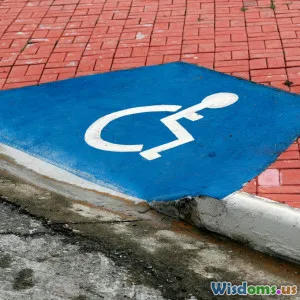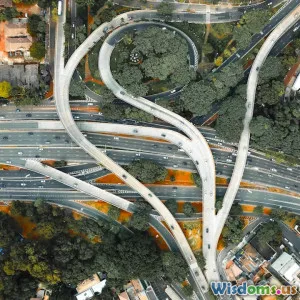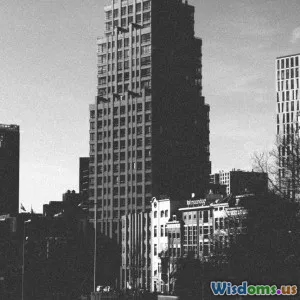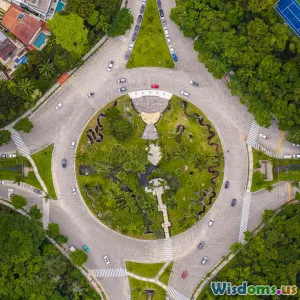
Inclusive Infrastructure in Urban Planning
9 min read Explore how inclusive infrastructure transforms urban planning for equitable, accessible cities. (0 Reviews)
Inclusive Infrastructure in Urban Planning: Building Cities for All
Urban planning and architecture shape the everyday experiences of millions worldwide. Yet historically, many cities were designed with limited consideration for the diverse needs of all citizens—particularly marginalized groups such as people with disabilities, older adults, low-income residents, and racial minorities. Inclusive infrastructure offers a transformative approach, grounding urban development in principles of accessibility, equity, and participation.
This article explores the essence of inclusive infrastructure in urban planning, examines its critical aspects, and illustrates successful implementations around the world. By understanding and embracing inclusive design, architects, planners, policymakers, and communities can collaborate to forge cities that truly work for everyone.
What Does Inclusive Infrastructure Mean?
Inclusive infrastructure refers to the physical frameworks—streets, buildings, public spaces, transportation, utilities—that are intentionally designed or adapted to be accessible and beneficial to people of all abilities, ages, socioeconomic statuses, and backgrounds. It goes beyond mere compliance with regulations like the Americans with Disabilities Act (ADA) or similar standards worldwide, by proactively addressing systemic barriers.
Core Principles
- Accessibility: Infrastructure should be usable by people with varying physical, sensory, and cognitive abilities. This includes features like ramps, tactile paving, audible signals, and clear signage.
- Equity: Resources and facilities should be distributed so that historically underserved communities receive improved access.
- Participation: Engaging directly with stakeholders from diverse communities during planning ensures that infrastructural solutions reflect real-world needs.
- Sustainability: Inclusive infrastructure also integrates environmental responsibility to serve communities long-term.
As Kofi Annan, former UN Secretary-General, noted, “There is no tool for development more effective than the empowerment of women and girls,” which underscores how inclusivity is an essential strategy across various dimensions of urban life.
Why Inclusive Infrastructure Matters in Urban Planning
Cities grow more diverse and complex daily. According to the United Nations, by 2050, 68% of the global population is projected to live in urban areas. This demographic trend amplifies the need for infrastructure that accommodates everyone.
Addressing Social Inequality
Inclusive infrastructure combats spatial inequalities that often coincide with poverty, racial segregation, and disability. For example, narrow sidewalks and lack of tactile indicators can effectively exclude visually impaired people from independent mobility. A 2018 World Bank report noted that 15% of the world’s population lives with some form of disability, yet less than 10% of cities host fully accessible public transit systems.
Enhancing Public Health and Safety
Accessible urban infrastructures—like well-lit streets, safe crosswalks, and inclusive park amenities—promote physical activity and mental well-being among all residents. The lack of such infrastructure contributes to higher accident rates. In the European Union, for instance, approximately 45,000 pedestrians are killed annually, many in areas lacking pedestrian-friendly designs.
Stimulating Economic Growth
Inclusive cities attract a wider range of talent and consumers. Businesses benefit from a larger, more diverse customer base, while workers with disabilities or limited mobility can more easily commute. A McKinsey study revealed that companies prioritizing inclusion outperformed their peers financially.
Key Strategies for Developing Inclusive Infrastructure
Universal Design Principles in Public Spaces
Universal Design refers to creating environments inherently accessible to all people without adaptation. The city of Copenhagen exemplifies these concepts—its pedestrian pathways feature even, non-slip surfaces, lowered curbs, and audible traffic signals that cater to elders, children, and people with disabilities alike.
Participatory Planning Processes
Genuine inclusivity requires involving underrepresented communities throughout the planning process. The Boston Complete Streets initiative, for example, conducted extensive public workshops targeting elders, disabled residents, and minority groups to identify barriers and prioritize improvements. This engagement resulted in redesigning streetscapes to ensure safer crossings and better transit access in underserved neighborhoods.
Multi-Modal Transportation Networks
Reducing car dependency by expanding accessible public transportation, cycling lanes, and pedestrian networks is essential. Medellín, Colombia’s innovative escalator and elevator systems integrated into hillside neighborhoods provide mobility options for residents who previously faced uphill struggles, dramatically improving the quality of life.
Smart Technology Integration
Incorporating technology like real-time transit apps with accessibility data and sensor-based street lighting ensures timely information and safety, enhancing usability. Barcelona’s smart city initiatives include smart crosswalks that extend crossing times for pedestrians needing more time.
Real-World Examples of Inclusive Infrastructure Initiatives
1. Melbourne’s Accessibility Action Plan
Melbourne, Australia, launched this plan to ensure its urban infrastructure and services eliminate barriers by 2030. The city’s public transport upgrades feature low-floor trams, tactile ground indicators, and increased audio announcements.
2. New York City’s Vision Zero
Launched in 2014, Vision Zero aims to eliminate traffic fatalities and serious injuries while increasing pedestrian and cyclist safety. By redesigning dangerous intersections, improving street lighting, and adding pedestrian refuges, New York reduced traffic deaths by 29% over five years.
3. Singapore’s Barrier-Free Accessibility Standards
Singapore requires all public housing and many public facilities to include barrier-free access such as ramps, handrails, and accessible toilets. These standards have promoted inclusivity in a rapidly urbanizing environment.
Challenges and the Road Ahead
While strides are being made, multiple challenges hinder widespread inclusive infrastructure adoption:
- Funding Limitations: Retrofitting existing infrastructure can be cost-prohibitive for some municipalities.
- Data Gaps: Lack of disaggregated data about disabled and marginalized communities prevents tailored solutions.
- Cultural Attitudes: Stigma and lack of awareness may limit demand for accessibility.
Addressing these challenges requires coordinated policy frameworks, sustained public investment, and continuous civic engagement. Incentivizing private sector participation can also mobilize additional resources.
Conclusion: Shaping Cities Everyone Can Call Home
Inclusive infrastructure is no longer a lofty ideal but an essential framework for sustainable, equitable urban development. When cities integrate accessibility and equity into their design and planning, they unlock the full potential of their populations—fostering economic vitality, well-being, and social cohesion.
Architects, planners, policymakers, and communities must harness innovative thinking and participatory approaches to dismantle physical and social barriers. As we look toward an increasingly urban future, the commitment to inclusive infrastructure will determine whether our cities serve the many or the few.
The journey toward truly inclusive cities invites every stakeholder to contribute, ensuring urban spaces that are livable and empowering for all. It’s not just good design — it’s a fundamental human right.
By embracing inclusive infrastructure in urban planning, we pave the way for healthier, fairer, and more resilient cities worldwide.
Rate the Post
User Reviews
Popular Posts





















